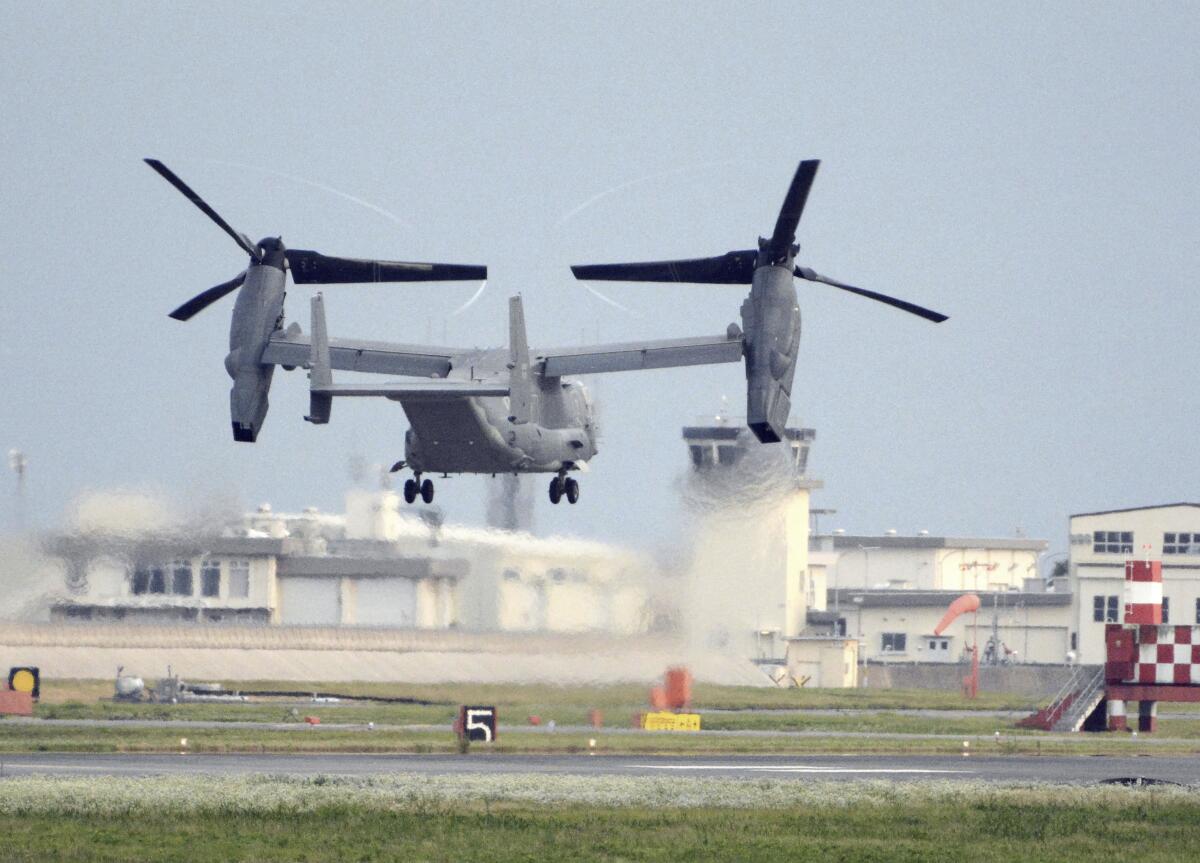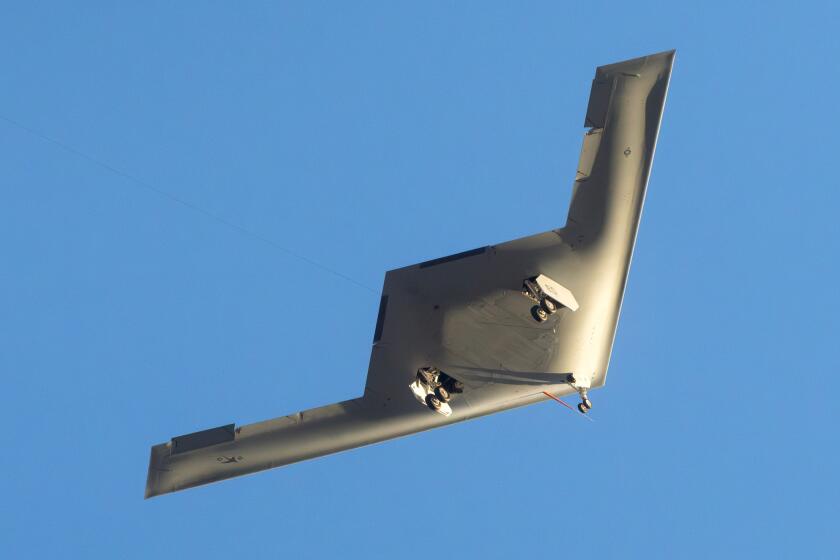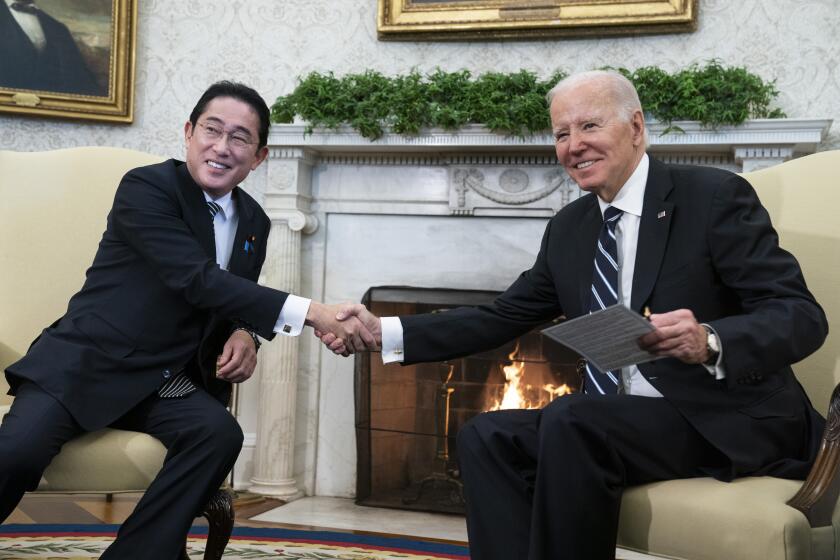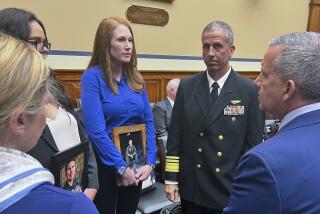Divers discover wreckage and remains from U.S. Air Force crash off Japan

- Share via
TOKYO — U.S. and Japanese divers have discovered the wreckage and the remains of five crew members from a U.S. Air Force Osprey aircraft that crashed last week off southwestern Japan, the Air Force announced Monday.
The CV-22 Osprey carrying eight American crew members crashed last Wednesday off Yakushima island during a training mission. The body of one victim was recovered and identified earlier.
The Air Force Special Operations Command said that two of the five newly located sets of remains had been recovered and identifications were pending. The joint U.S.-Japanese search operation is still working to recover the other remains, while the search continues for the two people who are still missing.
“The main priority is bringing the Airmen home and taking care of their family members. Support to, and the privacy of, the families and loved ones impacted by this incident remains AFSOC’s top priority,” the command said in a statement.
The U.S. military identified the one confirmed victim as Air Force Staff Sgt. Jacob Galliher of Pittsfield, Mass., on Saturday.
On Monday, divers from the Japanese navy and U.S. military spotted what appeared to be the front section of the Osprey, along with possibly five of the missing crew members, Japan’s NHK public television and other media reported.
The futuristic new B-21 bomber took off on its first flight Friday morning from Palmdale, a milestone event as the plane continues testing.
Japanese navy officials declined to confirm the reports, saying they could not release details without consent from the U.S.
The U.S.-made Osprey is a hybrid aircraft that takes off and lands like a helicopter but can rotate its propellers forward and cruise much faster, like an airplane, during flight.
Ospreys have had a number of crashes, including in Japan, where they are used at U.S. and Japanese military bases, and the latest crash rekindled safety concerns.
Japan has suspended all flights of its own fleet of 14 Ospreys. Japanese officials say they have asked the U.S. military to resume Osprey flights only after ensuring their safety. But the Pentagon said that no such formal request has been made and that the U.S. military is continuing to fly 24 MV-22s, the Marine version of Ospreys, deployed on the southern Japanese island of Okinawa.
At a White House meeting Friday, President Biden and Japanese Prime Minister Fumio Kishida signaled a more confrontational approach to China.
On Sunday, pieces of wreckage that Japan’s coast guard and local fishing boats had collected were handed over to the U.S. military for examination, coast guard officials said. Japan’s military said the debris it had collected would also be handed over to the U.S.
Coast guard officials said the recovered pieces of wreckage include parts of the aircraft and an inflatable life raft but nothing related to the cause of the crash, such as an engine. Local witnesses reported seeing fire coming from one of the engines.
Under the Japan-U.S. Status of Forces Agreement, Japanese authorities may not seize or investigate U.S. military property unless the U.S. decides otherwise. That means it will be practically impossible for Japan to independently investigate the cause of the accident.
The agreement has often made Japanese investigations difficult in criminal cases involving American service members on Okinawa and elsewhere, and has been criticized as unequal by rights activists and others, including Okinawa Gov. Denny Tamaki, who has called for a revision.
More to Read
Sign up for Essential California
The most important California stories and recommendations in your inbox every morning.
You may occasionally receive promotional content from the Los Angeles Times.












